Hiding in this barn is a classic that has occupied the same spot for over thirty years. This 1954 Hudson Super-Jet is a relatively rare classic, and it needs love to return to its former glory. However, it appears complete, and the lack of visible rust might make it an ideal project for someone with a DIY approach. It is also undeniably affordable, increasing the temptation further. I must say a big thank you to Barn Finder T.J. for spotting this hidden treasure.
Hudson introduced its new Jet range in 1953 as a compact designed to take on similar cars from The Big Three. Development costs were more significant than the company envisaged, pushing Hudson to the brink of bankruptcy. The Jet was an expensive exercise and only remained in production for two years. The company offered two and four-door sedan variants, although it also built a single Convertible. Our feature two-door Club Sedan has spent the past thirty years in its current location, and a heavy coating of dust obscures much of its original Spring Green paint. Therefore, determining its overall condition is challenging. However, the seller confirms that the barn is extremely dry, raising the possibility that this classic is rust-free. They only supply a few poor-quality images of one side of the Super-Jet, but the panels look straight, and the trim appears intact and restorable. The windshield is badly cracked, although the remaining glass seems okay.
Hudson positioned the Super-Jet as the top-end model upon its 1953 release, but with the more luxurious Jet-Liner hitting the market in 1954, it became the mid-range vehicle. Affordability was a driving factor in the car’s development and marketing, so Hudson didn’t add unnecessary luxury touches beyond cloth seat trim. It offered an optional AM radio, but it seems that few people splashed their cash on one. This car’s interior is complete, although it requires plenty of TLC. The seatcovers are pretty shabby, and the headliner has ripped. However, the new owner could hand those items to an upholsterer to serve as templates for handmade trim. This may prove necessary because I had no luck locating replacement trim during an admittedly brief online search.
The seller supplies no engine photos, and their listing is slightly confused. They claim the Hudson features an automatic transmission, but with a visible clutch pedal, that appears to be incorrect. The company offered two versions of its manual transmission, with the range-topping unit featuring overdrive. I don’t believe this car scored that item, but the engine bay should house the company’s 202ci six-cylinder powerplant. It produced 104hp and 158 ft/lbs of torque in its prime, making the Super-Jet a competent performer in most circumstances. It would never win a “Traffic Light Grand Prix,” but cruising on the open road at 60mph while returning a respectable 20mpg made the Super-Jet a practical long-distance cruiser. It is unclear when the engine last fired a shot in anger and if it even turns. Therefore, the new owner should probably factor a complete mechanical refurbishment into their restoration budget.
Barn Finder T.J. spotted this 1954 Hudson Super-Jet listed here on Facebook Marketplace in Chambers, Nebraska. It needs plenty of work before returning to its rightful place on our roads, but the seller’s price of $2,900 makes it a cheap starting point for a project build. Perhaps the Jet’s greatest claim to fame is that its development costs pushed Hudson to the financial brink, forcing a merger with Nash-Kelvinator to form what became known as American Motors. Therefore, this car played a part in a significant slice of motoring history. That makes it worthy of restoration.
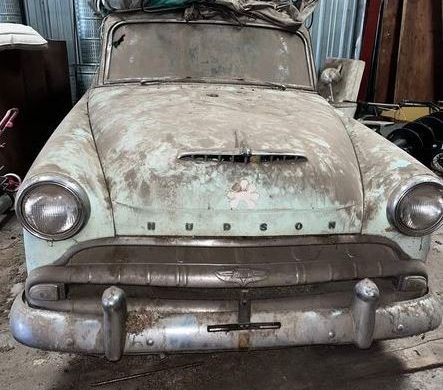
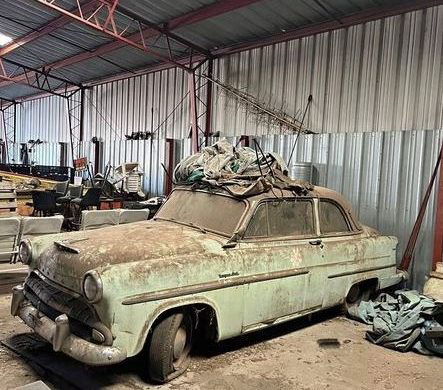
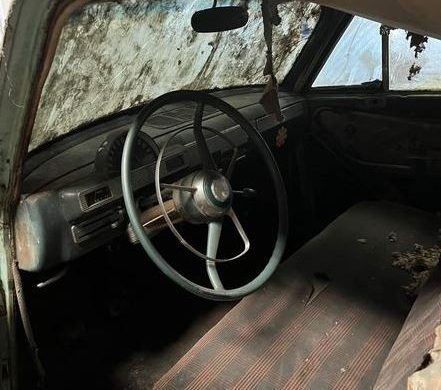
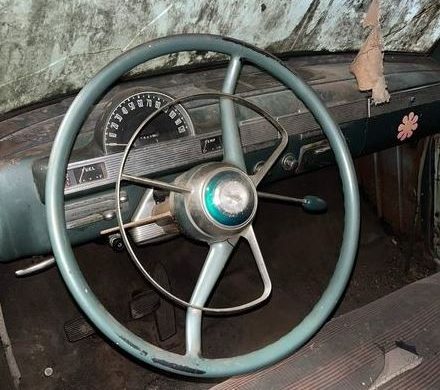
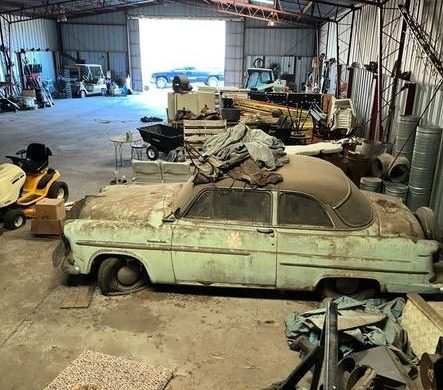


Cleaning out the barn, I see. This was clearly someone in the families 1st car, and kept it all these years. The “hippy daisy” on the glove box door would indicate driven last in the 60s. I’m sure the seller could fill in the details. The Jet, which looked an awful lot like a shoebox Ford, was a good car. All these 50s cars, Hudson, Nash, Studebaker, Kaiser, Packard all used the same mechanical parts. So to say one was worse than another isn’t fair. Wasn’t necessarily about price either, as these were aimed at the cheapest segment of the people, and still sold poorly, so it had to come down to whatever pa drove. In most cases, Ford or Chevy. Obviously, not an automatic, but would sure help. Lot of farms out there, and this stuff will continue to come to light for years. Whether there’s a market for it, time will tell.
“All these 50’s cars Hudson, Nash, Studebaker, Kaiser, Packard all used the same mechanical parts”. Are you sure? As the owner of a 1951 Hudson Hornet, I am quite familiar with Hudsons. I sure would like to know which mechanical parts are interchangeable with Nash, Studebaker, Kaiser, and/or Packard. And of those four makes, which parts are interchangeable between them, except for possibly late 50’s Studebaker and Packard after they merged? Of course, after Hudson and Nash merged, some of the models included similar mechanical parts, but that was only during the latter half of the 1950’s.
“All these 50’s cars Hudson, Nash, Studebaker, Kaiser, Packard all used the same mechanical parts” is the same sort of thing my non-car-guy, shoot from the hip, get his bluff called dad would have said. ;)
While I’m not sure why I have to defend my statement, when I say that, many of the orphan cars were “assembled” cars, meaning they used aftermarket parts rather than make their own. Bendix brakes, Delco electrics, timkin, BorgWarner, suspension parts, all came from aftermarket suppliers. While they may not be interchangable, they all came from outside suppliers. It, in part, is what kept this country moving. Everybody had a job in America.
Lots of parts come from aftermarket suppliers on all cars…tell us something we don’t know. It is common practice, to this day. Do you think every manufacturer makes every part on their own car? Far from it.
Even at $2900, this is overpriced. Two ery nice examples sold this year on Bring a Trailer. One for $7500 and another non-running for $4200. That said, I love the miniature cars from the 50s. All the style but in a smaller package.
When I was about 13 my father used to drive us down Jefferson Avenue in Detroit and past the Hudson plant. In 1954 Hudson came out with many new colors and the cars in the lot at the plant was really beautiful. My father worked at the Chrysler Jefferson Ave. assembly plant. The full size Chrysler products were produced in this plant. On family day I saw 1956 Dodges being assembled. My dad drove large Buicks back then. Only Ford Motor was “picky” with employees about driving the “correct” car. Later in life when I would visit Ford taking to them Cummins Engine issues word went to Cummins about this engineer driving a Buick to visit them.
When I was about 13 my father used to drive us down Jefferson Avenue in Detroit and past the Hudson plant. In 1954 Hudson came out with many new colors and the cars in the lot at the plant was really beautiful. My father worked at the Chrysler Jefferson Ave. assembly plant. The full size Chrysler products were produced in this plant. On family day I saw 1956 Dodges being assembled. My dad drove large Buicks back then. Only Ford Motor was “picky” with employees about driving the “correct” car. Later in life when I would visit Ford taking to them Cummins Engine issues word went to Cummins about this engineer driving a Buick to visit them.
NO, those 1950s independent auto makers most certainly did not use the same mechanical parts! You need to read up on the 1950s cars before making a silly statement like that!
Touche!
Either bring it back to life as is or put a 302 ford engine mated to the three speed if possible or a 4 speed, I’m not sure if the stock rear end could take it, maybe need to change that also. redo the interior and tires and wheel and drive it.
The continental kit alone is likely worth half the asking price to the right person. I had a 53 Jet with 3 speed and overdrive and had the optional Twin H carburetor set up for the 202. Unfortunately it burned up in a fire. I passed on another Jet that had the Hornet 308 installed, which required moving the firewall back perhaps 6 to 12 inches. Engine and brake parts were cheap and plentiful for my Jet in the early 70s and are likely still plentiful. They still are for my 54 Hornet. Regarding interchangeability, a lot of Jeep parts from the same era interchange with my 56 Studebaker pickup–including the steering sector shaft.
Many makes used the Borg-Warner automatic transmissions, early ’50’s the two speed, 60’s more or less, a 3 speed, including Jaguar, as was the early Fordomatic, and Mercomatic, if I remember right. Jeep for a few years in the ’60’s used the Buick sourced V6 in the Jeepster along with a GM automatic transmission.
One small correction. Hudson didn’t introduce this car to compete with the big three. They didn’t have any compact cars at the time. It was to compete with the smaller companies. Nash had Rambler, Kaiser had Henry J and Willys had the Aero.